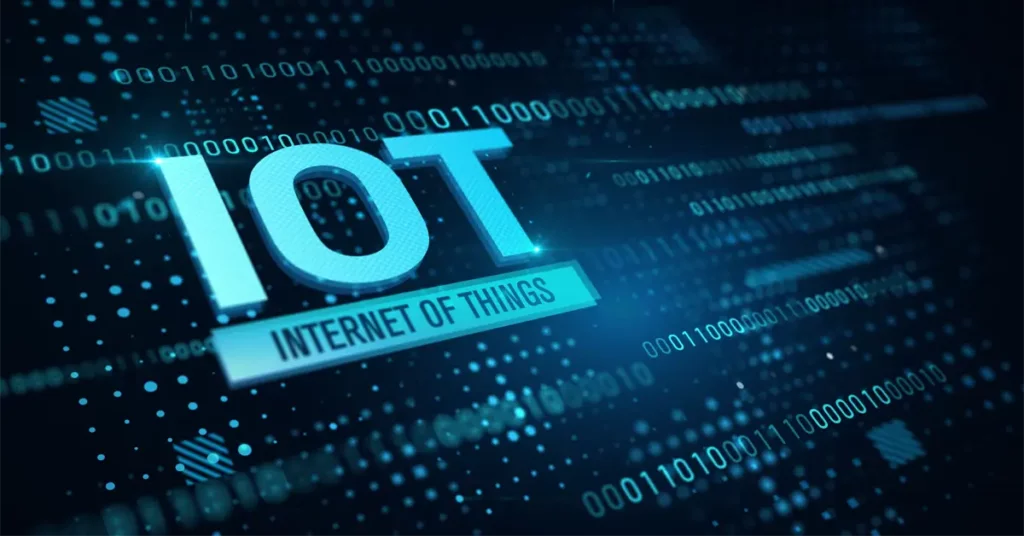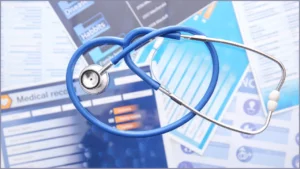The Internet of Things (IoT) has brought about a revolution in the field of technology and has significantly impacted various industries and revolutionized healthcare. According to the National Library of Medicine (NIH), IoT have improved health service delivery. IoT remote monitoring is also an application of IoT technology that has transformed the way remote patient monitoring is carried out.
Remote patient monitoring refers to the use of technology to monitor the health of patients outside of a traditional clinical setting. The implementation of IoT remote monitoring has enabled real-time monitoring, predictive maintenance, and cost-effective remote management, making it a game-changer in the healthcare industry.
This article aims to explore the transformation of remote patient monitoring through IoT remote monitoring. It begins by defining IoT and explaining how IoT remote monitoring works.
IoT and Remote Monitoring:
The Internet of Things (IoT) refers to a system of interconnecting physical devices, vehicles, buildings, and other objects that are embedded with sensors, software, and network connectivity. These objects are connected to the internet and can collect and transmit data to other devices or a central system. IoT enables real-time monitoring and control of physical devices through the internet.
Remote monitoring refers to the use of technology to monitor the performance of equipment or systems from a remote location. The goal of remote monitoring is to optimize productivity, reduce downtime, and increase efficiency by proactively detecting and addressing issues before they become major problems. IoT remote monitoring takes remote monitoring to the next level by using IoT technology to collect and transmit data from devices in real-time.
IoT remote monitoring works by connecting devices to the internet and transmitting data to a central system, where it can be analyzed and used to make informed decisions. This process involves the use of IoT devices, such as sensors, that are embedded in equipment and machines.
These sensors collect data and transmit it to a central system, where it can be analyzed and used to monitor the performance of the equipment. The data can be accessed through a dashboard or an application, allowing users to monitor the devices in real-time from anywhere with an internet connection. Additionally, IoT remote monitoring can also send alerts when there are issues that need to be addressed.
In the context of remote patient monitoring, IoT remote monitoring enables real-time monitoring of patients’ vital signs and health data. This allows healthcare providers to monitor patients remotely, even from their own homes, and respond to any potential health issues quickly. IoT remote monitoring in remote patient monitoring also enables predictive maintenance by collecting data from devices and analyzing it to detect potential issues before they become major problems. This can help to reduce downtime and improve the overall efficiency of remote patient monitoring.
Benefits of IoT Remote Monitoring in Remote Patient Monitoring:
- Real-time Monitoring: IoT remote monitoring allows healthcare providers to monitor patients in real-time, even from a remote location. This enables providers to respond quickly to any potential health issues and improve patient care.
- Predictive Maintenance: IoT remote monitoring can collect data from devices and analyze it to detect potential issues before they become major problems. This can help to reduce downtime and improve the overall efficiency of remote patient monitoring.
- Improved Patient Outcomes: By enabling real-time monitoring of patients’ vital signs and health data, IoT remote monitoring can help healthcare providers detect potential health issues quickly and respond with appropriate care. This can lead to improved patient outcomes and better overall health for patients.
- Increased Productivity: IoT remote monitoring can streamline the RPM process by automating data collection and analysis. This can help healthcare providers to become more proactive in their monitoring, reduce downtime, and increase overall productivity.
- Cost-Effective: IoT remote monitoring is a cost-effective solution for RPM, as it eliminates the need for in-person visits and can reduce the costs associated with traditional remote monitoring methods.
- Remote Access: IoT remote monitoring allows healthcare providers to access patient data from anywhere with an internet connection. This enables providers to monitor patients even when they are not in the same location, improving the flexibility and convenience of RPM.
- Advanced Analytics: IoT remote monitoring enables the collection and analysis of large amounts of data, providing healthcare providers with insights into patient health and enabling them to make informed decisions about patient care.
Implementation of IoT Remote Monitoring in Remote Patient Monitoring:
Implementing IoT remote monitoring in RPM requires the right combination of hardware, software, and analytics. IoT sensors are the key components that enable remote monitoring and provide the real-time data needed to monitor patients remotely.
The use of IoT sensors helps reduce energy consumption and enables effective predictive maintenance. To make the most of IoT remote monitoring, it is essential to implement a comprehensive monitoring solution that integrates IoT monitoring, monitoring software, and analytics.
Below are seven steps to implement IoT remote monitoring in RPM:
- Identifying Needs: The first step in implementing IoT remote monitoring in RPM is to identify the specific needs and requirements of the patient population. This will help to determine what kind of monitoring tools and devices are necessary to achieve the desired outcomes.
- Selecting IoT Devices: The next step is to select the appropriate IoT devices and sensors for monitoring the patients. This can include devices for measuring vital signs, such as blood pressure and heart rate, as well as sensors for monitoring environmental factors such as temperature and humidity.
- Connecting IoT Devices: Once the appropriate devices have been selected, they must be connected to a network and configured to transmit data to a central monitoring system. This can be accomplished through the use of gateways and IoT platforms.
- Setting up Monitoring System: The next step is to set up a monitoring system to receive and process the data transmitted by the IoT devices. This system can be a software-based platform that provides real-time data analysis and visualization, as well as predictive maintenance capabilities.
- Providing Remote Access: The monitoring system should provide remote access to healthcare providers so they can monitor patients from anywhere with an internet connection. This can be achieved through the use of web-based dashboards or mobile apps.
- Training and Support: It is important to provide training and support to healthcare providers to ensure that they are able to effectively use the IoT remote monitoring system. This can include training on the use of the monitoring platform, as well as support for troubleshooting and maintenance of the system.
- Continuously Monitoring and Improving: The implementation of IoT remote monitoring in RPM is an ongoing process. It is important to continuously monitor the system and make improvements as necessary to ensure that it is meeting the needs of the patients and healthcare providers.
IoT-enabled solutions can help organizations implement IoT remote monitoring and take advantage of the benefits of remote monitoring. With IoT analytics and machine learning, organizations can analyze sensor data and identify patterns that are useful for optimizing energy consumption, ventilation, and other critical aspects of remote patient monitoring. By using advanced IoT management tools, organizations can streamline their operations, reduce downtime, and increase productivity.
To implement IoT remote monitoring in RPM, organizations need to invest in internet-connected devices, such as wireless sensors, and have the right IoT platform to connect the devices and receive data. The ability to remotely monitor patients using IoT sensors and analytics tools like machine learning is an essential component of effective predictive maintenance. With live data and real-time access to performance data, organizations can make data-driven decisions and become more proactive in their patient monitoring practices.
IoT Remote Monitoring and DrKumo RPM Solutions
DrKumo leverages IoT remote monitoring technology to provide innovative and effective solutions for remote patient monitoring. DrKumo IoT-enabled monitoring system and sensors collect real-time data and transmit it to our cloud-based platform, where it can be analyzed using advanced AI/ML algorithms to generate meaningful insights. This helps healthcare providers to proactively intervene and support patients in managing their health conditions.
As a technology leader in the field of remote patient monitoring, DrKumo is dedicated to revolutionizing the way people access quality healthcare. DrKumo state-of-the-art HIPAA-compliant solution combines mobile-enabled continuous monitoring with AI/ML algorithms to provide real-time insights and enable timely intervention.
DrKumo focus is on solving the most painful problems in healthcare, and their user-friendly solution is designed to support both patients and healthcare providers. With a culture that is innovative, collaborative, and technology-driven, DrKumo is committed to providing the most effective RPM solutions for Chronic Disease Management, Acute Care, Post-Operation, and Hospital Care at Home.
Takeaways
IoT Remote Monitoring has revolutionized healthcare delivery by enabling real-time monitoring, proactive care, and advanced analytics for remote patient monitoring. Healthcare providers can implement remote monitoring solutions that enable remote management and live data analysis, reducing energy consumption, improving productivity, and cost-effectiveness. The continued advancements of IoT RPM have the potential to improve patient outcomes, make healthcare more accessible and efficient, and transform healthcare delivery.
Embrace the power of IoT remote monitoring and improve patient outcomes with a cutting-edge RPM solution. Contact DrKumo now.









